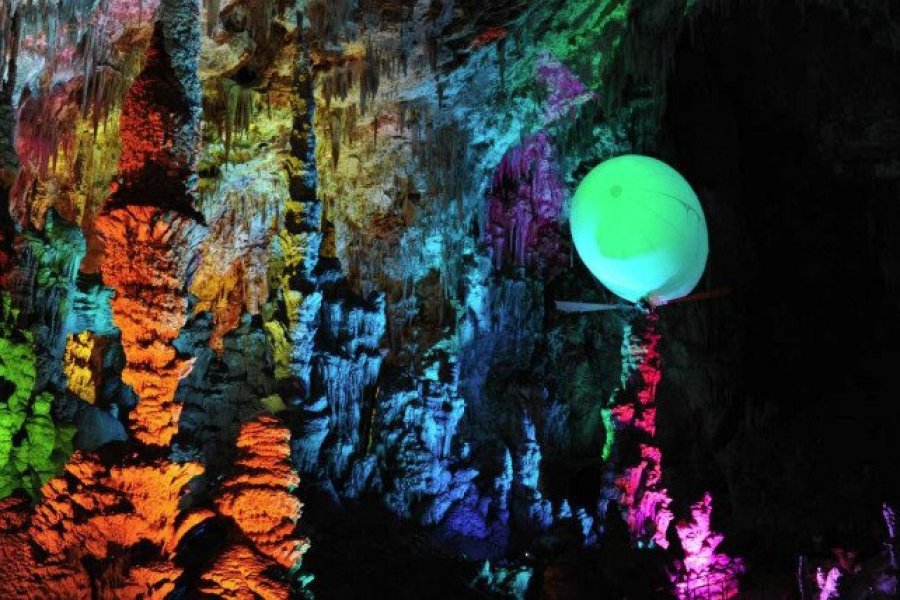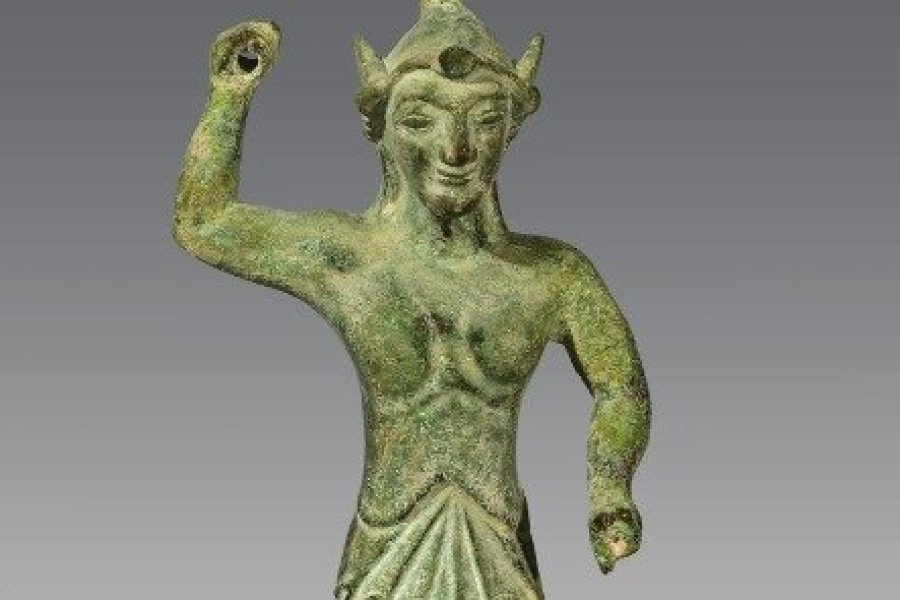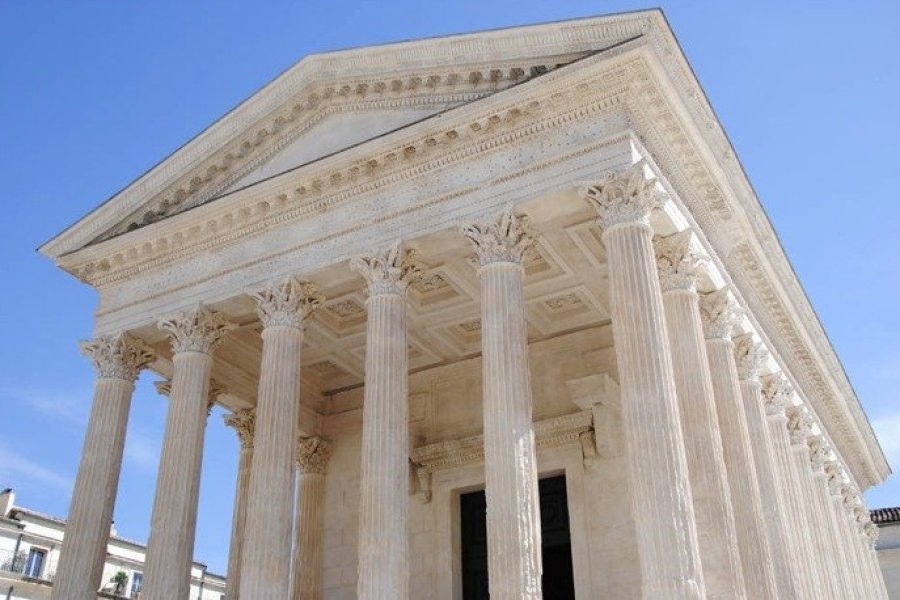
"Immersion": sound and light show at Grotte de la Salamandre
Recommended by Stéphan SZEREMETA
The Grotte de la Salamandre presents its latest show, "Immersion", a sensory experience combining sound and light in the Grande Salle. Audiences ...
Here is a territory full of picturesque, sun and joy of living to visit. It is the South, the scrubland and the cicadas, the Camargue with its flamingos, its horses, its toros and its ferias, but also the mountains. The Gard culminates at Mount Aigoual (1,567 m) and is divided into four geological and landscape zones: the Cévennes in the northwest, the Garrigues in the center, the Costières in the southeast, and the lowlands of the Rhone plain, the coastal plain and the Petite Camargue. It is a country with 40% wooded land, 17% moorland or scrubland and nearly 30% agricultural land. Wine growing dominates the agricultural landscape. Very touristic due to the presence of emblematic sites to visit, including the Pont du Gard, this land offers 250 days of sunshine per year, 23 km of coastline, 465 listed monuments and 3,000 km of trails. But what else? Port-Camargue :1st marina in Europe, the Cirque de Navacelles, the Gardon gorges, the Camargue, Nîmes, Uzès and Beaucaire, three Cities of Art and History. Your favorite travel guide will be very useful to choose your visits.
Capital of the Gard, Nîmes is a jewel with its Roman monuments, splendid 17th and 18th century buildings and at the same time contemporary sites of great signatures, Sir Norman Foster's Carré d'Art museum, Jean Nouvel's Nemausus building, Martial Raysse's sculptures, Philippe Starck's bus shelter, Jean-Michel Wilmotte's interventions... Uzès, former duchy of France, seduces with its paved streets, its small squares, fountains, Renaissance mansions and monuments, but also its markets and small shops. In Beaucaire, one can appreciate the castle and the lively quays along the Rhône. Follow the Gard guide to enjoy this incredible destination.
Summer is the high tourist season in Grau-du-Roi/Port Camargue, with long fine sandy beaches close to the city centre and a vast expanse of dunes that look like the end of the world. Here the wind makes the happiness of kite surfers and other water sports enthusiasts. The fishing port is punctuated by days and seasons. In the middle of summer, the tables are full but the quality is not always there. Spring and autumn are more pleasant for tourists. Avoid the summer in Nîmes, which is often leaden by heat waves. In spring you can see the transhumance of the sheep on Mount Aigoual. However, it should be noted that both spring and autumn can be very rainy in the Cévennes (risk of flooding). Summer is hot and sometimes stormy. Winter is rather mild in the valley, but cool in cold elsewhere with frequent snowfalls above 1,000 m on Mount Aigoual.
All year round you have access to a string of charming villages, 4 of which are among the most beautiful in France: Aiguèze, an 11th century fortress, Montclus, a medieval village, La Roque-sur-Cèze, between vineyards and waterfalls, Lussan, a medieval city on a rocky peak, surrounded by ramparts. For Barjac, a village of character, the hunters will choose a visit at one of the two major fairs at the city's flea market, around Easter and around August 15. Those who don't like crowds will avoid these dates. The fig festivals, the fruit of the sun, which take place in August and October, add to the flavour of the medieval perched city of Vézénobre, which houses a fig conservatory. In the Camargue, ask for the ferias program. The grape harvest in Nîmes is famous. And no off-season for the Nîmes cod brandade. La Nîmoise, house of brandade, asparagus cuisine (spring), with garlic, parsley, lemon zest and olive oil from the Gard (summer), with mushrooms and sweet onions from the Cévennes (autumn), salmon or truffle from Uzès (end of year).
The Gard has a Mediterranean climate, with three nuances. In the south, from the coast to the Costières (small Camargue) the climate is mild in winter, hot in summer, dry all year round. In the center and east, Garrigues and Uzégeois, the climate is fairly mild in winter, hot to very hot in summer, especially in Nîmes, with a few thunderstorms in summer, rainfall in autumn and spring. To the northwest, the Cevennes have a Mediterranean climate with continental and oceanic influences that mitigate its leniency.

Recommended by Stéphan SZEREMETA
The Grotte de la Salamandre presents its latest show, "Immersion", a sensory experience combining sound and light in the Grande Salle. Audiences ...

Recommended by Tanguy REVAULT
The Etruscan population was one of the most refined in antiquity. Although still little known to the general public, the Musée de la Romanité ...

Recommended by Tanguy REVAULT
Since the very beginning of July, the Maison Carré has reopened its doors after 8 long months of renovation. The Nîmes monument offers a new ...